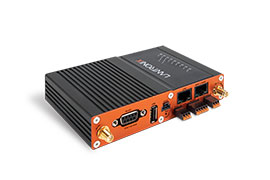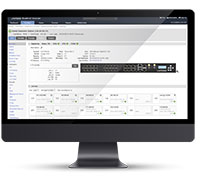Terminal Timing
Terminal timing is a signal sent from a DCE to a DTE to control the rate of data the DTE sends to the DCE. Since this signal cannot be sent across the fiber after media converters are introduced, the converter must generate this signal and supply it to the DTE. The converter gets the setting either from its thumbwheel (in hardware mode) or the MIB (in software mode).
The thumbwheel also allows the selection of Asynchronous mode, in which the transmit and receive clocks are disabled. Asynchronous mode can be selected via the thumbwheel only (i.e. you cannot switch back and forth between Synchronous and Asynchronous communications via the MIB).
For converters attached to DTEs, the thumbwheel setting influences the DTE’s transmit data rate. If the Terminal Timing setting is RXC, the DTE derives its transmit clock from its receive clock.
For converters attached to DCEs, the Terminal Timing setting has no effect (except for a thumbwheel setting of “Asynchronous”).
If two DTEs are connected via media converters, the thumbwheel settings must not both be RXC.











